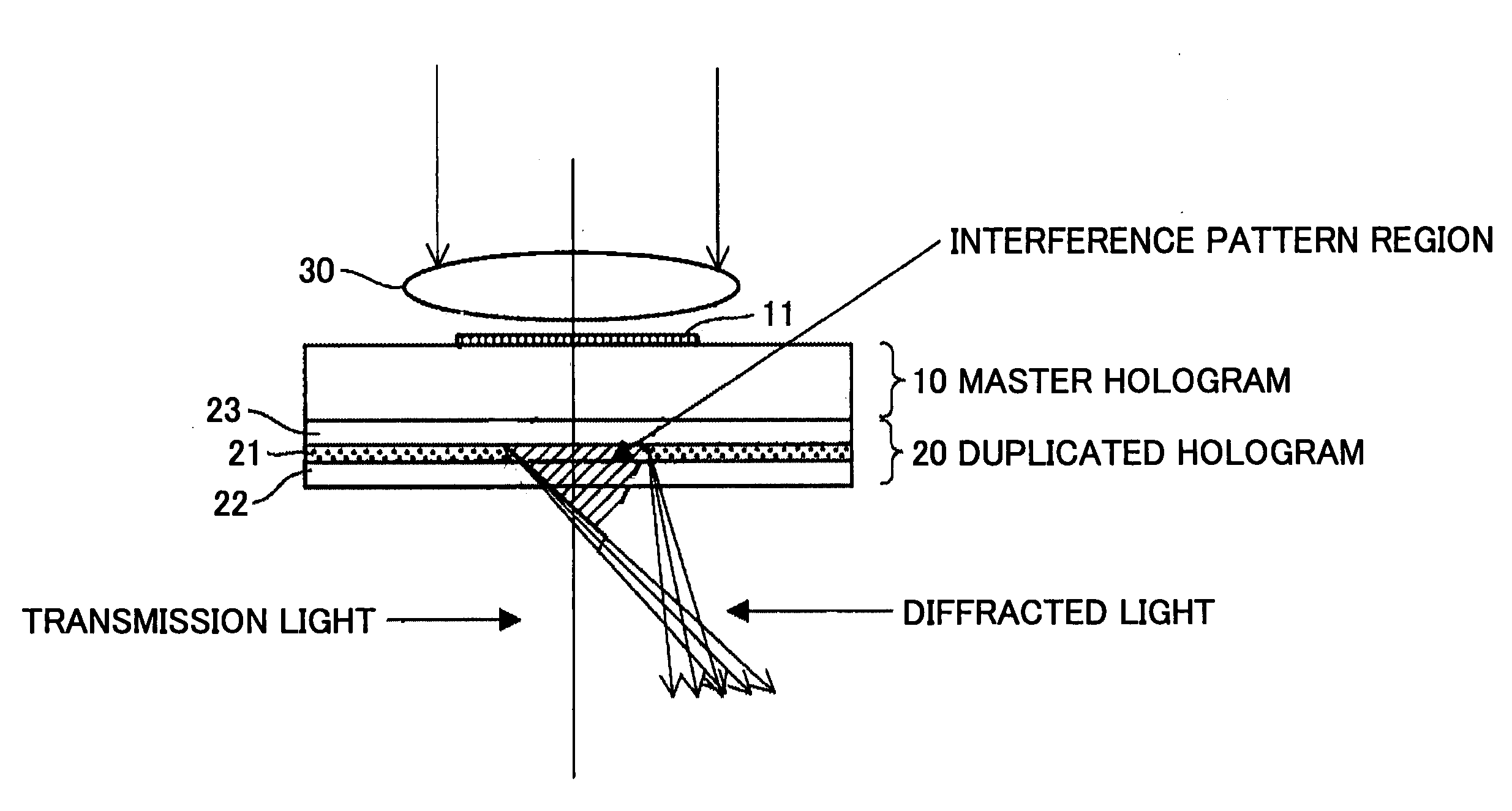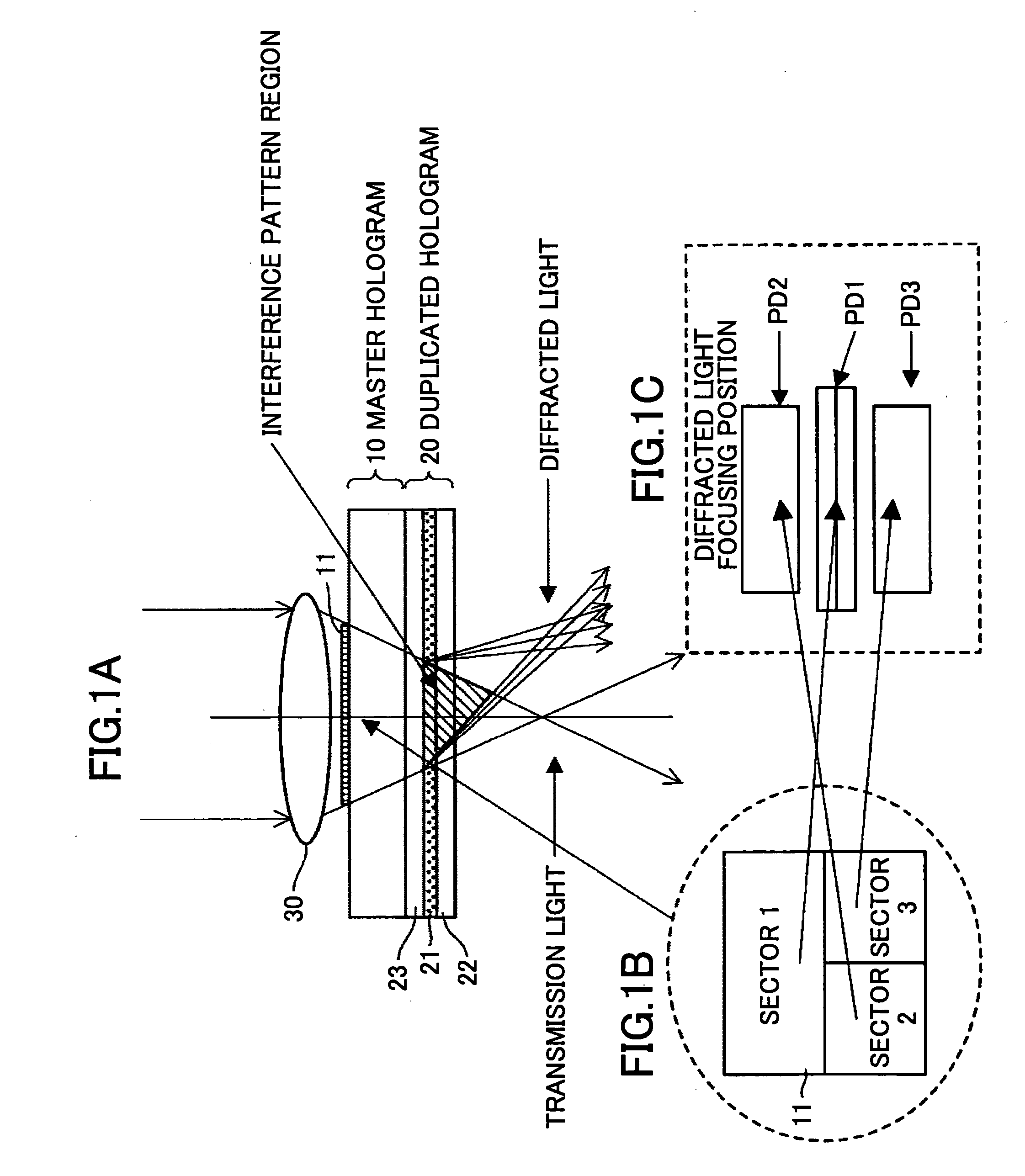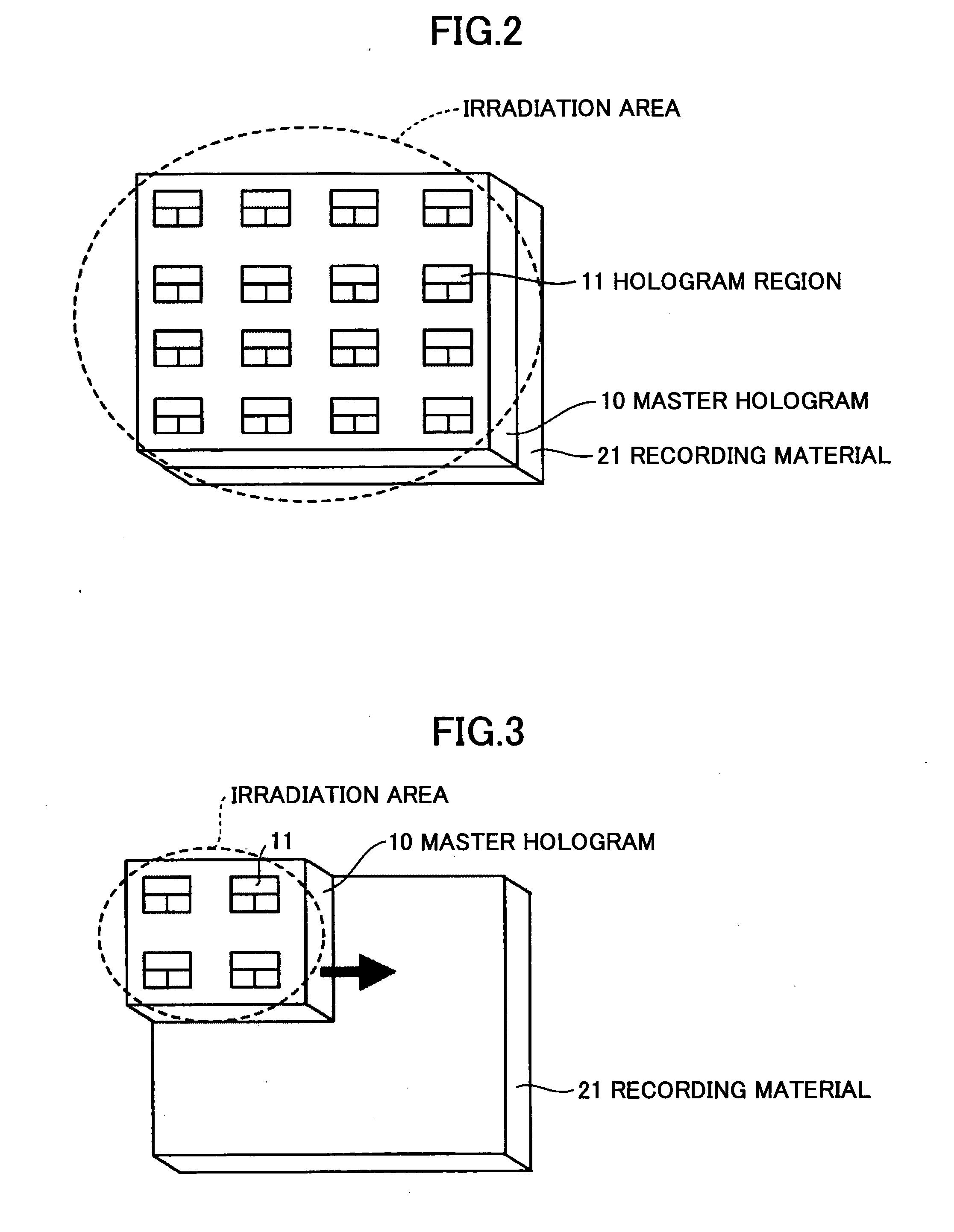Hologram element, production method thereof, and optical header
a technology of hologram elements and production methods, applied in the field of hologram elements, can solve the problems of inability to obtain desired alignment states, inability to impose desired electric fields on liquid crystal films, and difficulty in processing, so as to improve the productivity of hologram elements, prevent unnecessary scattering of light, and increase the accuracy of film thickness
- Summary
- Abstract
- Description
- Claims
- Application Information
AI Technical Summary
Benefits of technology
Problems solved by technology
Method used
Image
Examples
first embodiment
[0132] Below, descriptions are made of a configuration and operations of a hologram element of the present embodiment, and a method of producing the hologram element.
[0133] In the present embodiment, a polarization hologram element is used as an example, which has a periodic structure, the refractive index modulation of which changes with the polarization direction of incident light, and a method of producing such a polarization hologram element is described. More particularly, it is assumed that the polarization hologram element is fabricated by duplicating the hologram region of the periodic structure on a recording material by using a master hologram.
[0134]FIG. 1A through FIG. 1C are diagrams schematically illustrating a method of fabricating a polarization hologram element according to the present embodiment.
[0135] As illustrated in FIG. 1A, a master hologram 10 and a structure including substrates 22, 23 and a photo sensitive recording material 21 sandwiched by the substrate...
first example
FOR COMPARISON
[0199]FIG. 13A and FIG. 13B are a plan view and a cross-sectional view of a master hologram produced by two-beam interference exposure using a photo resist.
[0200] When producing the master hologram 10 shown in FIG. 13A and FIG. 13B, the wavelength of the incident light is 442 nm, the ratio of the strength of the transmission light (zero-th order light) and the first order diffracted light is roughly 1:1, and in a region where two incident beams intersect each other, an interference pattern having a period of approximately 1 μm is formed. With this master hologram 10, a hologram is duplicated in a recording material as described below (photosensitive material) by exposure.
[0201]FIG. 14A and FIG. 14B are a plan view and a cross-sectional view exemplifying the hologram element 20 including a recording material sealed between two substrates.
[0202] As illustrated in FIG. 14A and FIG. 14B, in the hologram element 20, including the recording material 21 sealed between the ...
second example
FOR COMPARISON
[0227]FIG. 17A and FIG. 17B are a plan view and a cross-sectional view illustrating a cell (hologram element) 20 in which plural isolation members are provided.
[0228] As illustrated in FIG. 17A and FIG. 17B, two isolation members 24 are provided in the cell 20, and three isolated regions are formed. Except for this point, the cell 20 in the present example is the same as that in the example 2. The cell 20 holding the recording material is fabricated in the same way as in the example 2. In the present example, the opening area of the opening mask 40 is reduced corresponding to the isolated regions. Exposure and duplication are performed in each isolated region, that is, exposure and duplication are performed three times.
[0229] The obtained hologram element was evaluated in the same way as in the previous examples. In the test, diffracted light was observed in the hologram regions formed in the second and the third exposure, but not observed in the hologram region form...
PUM
 Login to View More
Login to View More Abstract
Description
Claims
Application Information
 Login to View More
Login to View More - R&D
- Intellectual Property
- Life Sciences
- Materials
- Tech Scout
- Unparalleled Data Quality
- Higher Quality Content
- 60% Fewer Hallucinations
Browse by: Latest US Patents, China's latest patents, Technical Efficacy Thesaurus, Application Domain, Technology Topic, Popular Technical Reports.
© 2025 PatSnap. All rights reserved.Legal|Privacy policy|Modern Slavery Act Transparency Statement|Sitemap|About US| Contact US: help@patsnap.com



